Battle of The CPU Stock Coolers! 7x Intel vs 5x AMD, plus an EVO 212
by E. Fylladitakis on July 22, 2016 9:00 AM EST- Posted in
- Cases/Cooling/PSUs
- CPUs
- AMD
- Intel
- Cooler Master
- Cooler
The Intel Coolers
We have seven Intel coolers to test for the means of this review. Six are stock coolers accompanying processors that the company has released during the past decade and the seventh is the Intel BXTS15A (TS15A) that the company recently released as an aftermarket upgrade.
| Vendor | Cooler | Common Bundle | Core | Fins | Fan (mm) |
Mass (g) |
| Intel | D75716-002 | Socket 775 Celerons | Alu | Alu | ≈80 | 118 |
| C25704-002 | Socket 775, P4 6x0 | Cu | Alu | ≈80 | 132 | |
| E97378-001 | Socket 1155 Intel i5 | Cu | Alu | ≈80 | 146 | |
| E97379-001 | Socket 1155 Intel i3 | Alu | Alu | ≈80 | 92 | |
| D60188-001 | Socket 775, C2D E8x00 | Cu | Alu | ≈80 | 419 | |
| E31964-001 | Socket 1366 i7-X | Cu | Cu/Alu | ≈100 | 435 | |
| BXTS15A | Aftermarket, ≈$30 | Cu | Alu | ≈80 | 362 |
The Intel C25704-002 and Intel D75716-002 probably are the oldest coolers in this review. These were usually accompanying Socket 775 Intel Celeron and Pentium 4 “Prescott” processors several years ago. They are of nearly identical size and very similar in terms of design, with the exception that the D75716-002 has an aluminum core and a less powerful fan.
Intel C25704-002 and D57516-002
The Intel D60188-001 is essentially an overgrown C25704-002. Intel has been receiving a lot of criticism back in the day for having noisy stock coolers, therefore they nearly doubled the mass of the C25704 and used a significantly less powerful fan. The Intel D60188-001 usually was the stock cooler accompanying high performance Core 2 Duo processors.
The E97378-001 and the E97379-001 look almost identical and their ID numbers are very close, but major differences can be discerned when the coolers are turned upside down. Aside from the E97378 having a copper core, the E97379 has significantly lower mass and straight fins, hinting the use of a more powerful fan. Bent pins cause significant turbulence at high airflows and unnecessarily increase the cooler’s noise output.
Intel E97378-001 and E97379-001
Intel’s first attempt to design a high performance cooler was probably the Intel E31964-001, the stock cooler of socket 1366 i7 Extreme processors. They kept the core design the same but replaced half of the aluminum fins with copper fins and used a semi-transparent fan with blue LEDs. The mix of aluminum and copper fins creates a “flower” visual effect similar to that first seen on Zalman CNPS coolers nearly two decades ago. The straight fins and very high current rating of the fan hint that the Intel E31964-001 is not designed with silence in mind.
The Intel BXTS15A is an aftermarket cooler sold by Intel as an upgrade for socket 1151 CPUs but will also fit on older 1150/1156 processors. A mere glimpse on the cooler reveals that it is just an oversized version of the company’s stock coolers, mostly just much taller than what they have been supplying alongside with the CPUs. It is almost identical to the E31964-001, but has only aluminum fins and they are taller. It also has straight fins and a very strong fan, hinting that this will not be a silent cooler either.


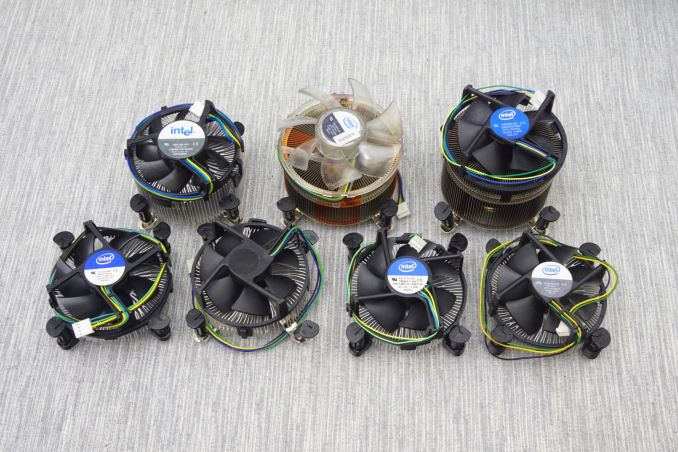
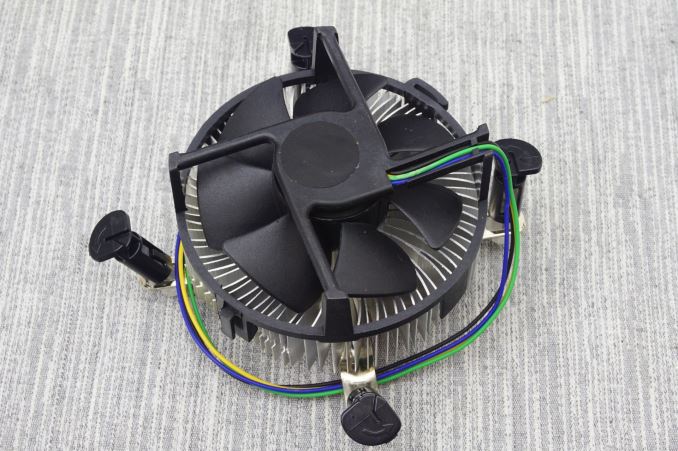
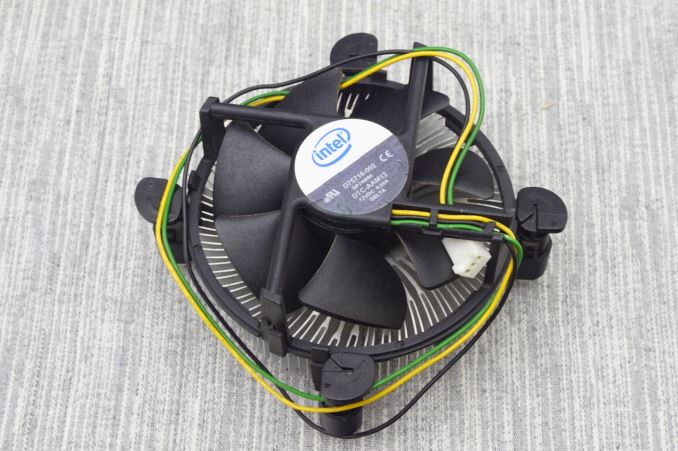

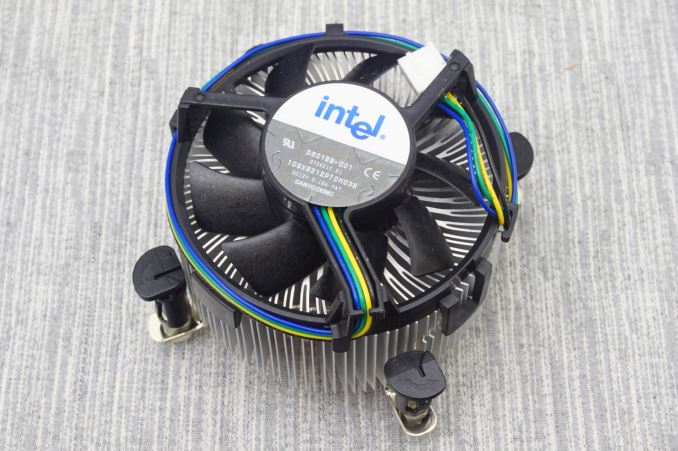

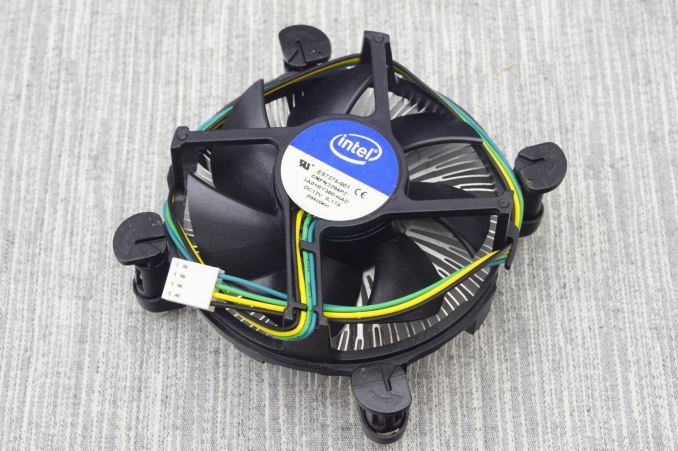
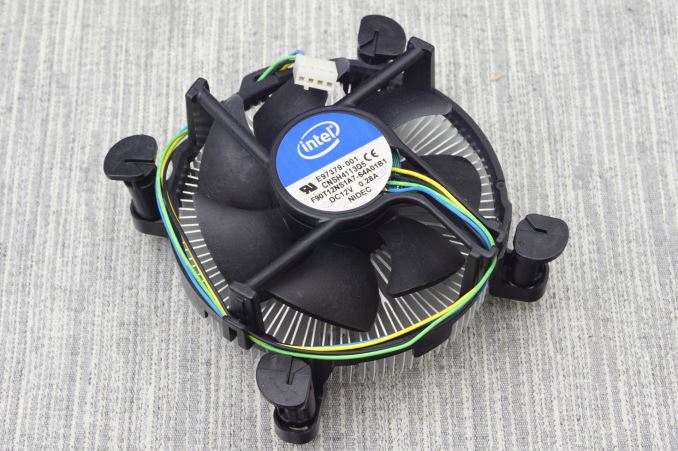
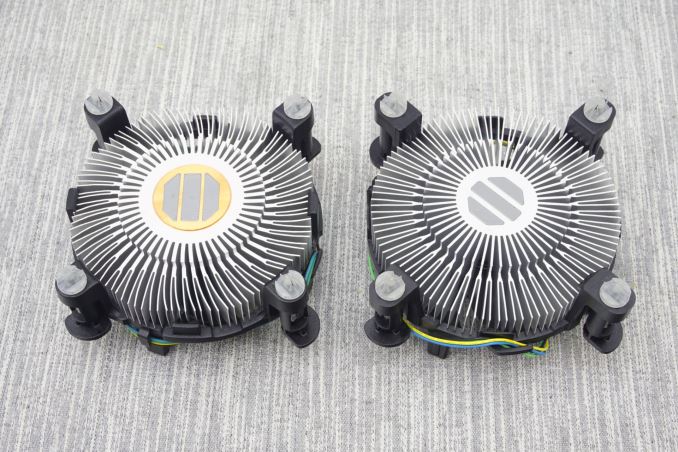
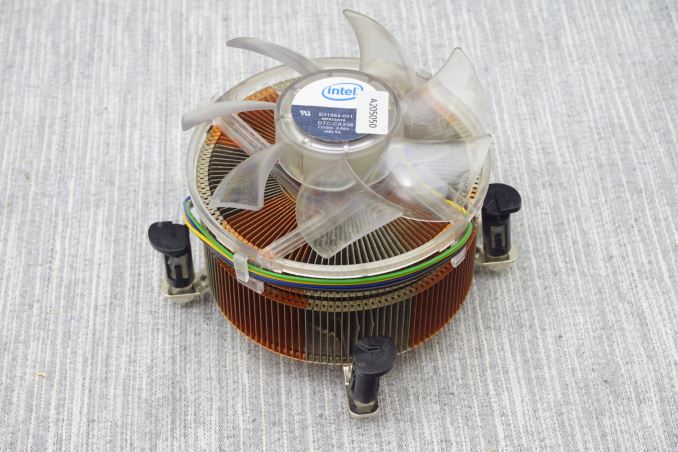
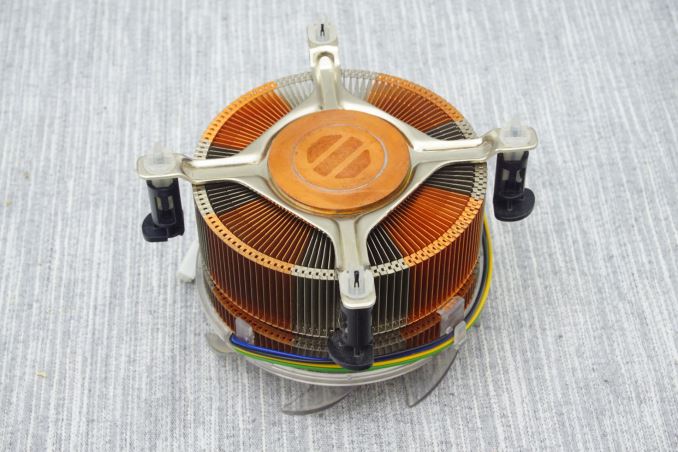
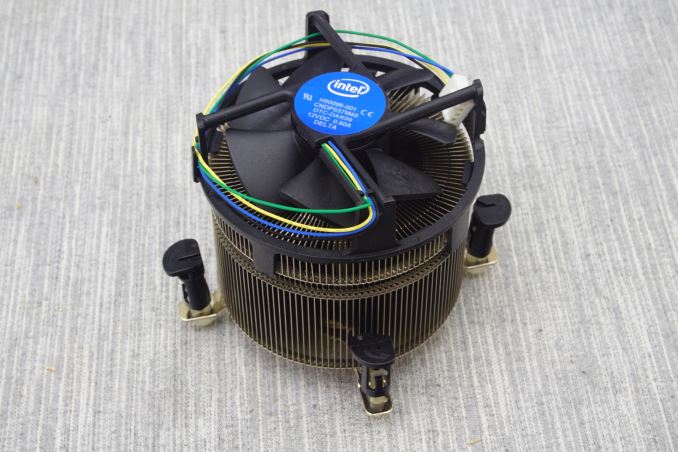
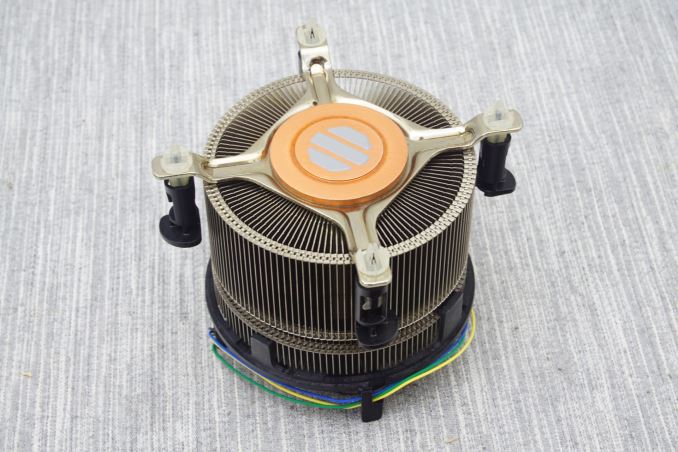








82 Comments
View All Comments
Cygni - Friday, July 22, 2016 - link
You thought that's what this comparison was about? Really? People swapping stock coolers? REALLY?SetiroN - Friday, July 22, 2016 - link
You don't get sarcasm even when explicitly pointed out? REALLY?ImSpartacus - Sunday, July 24, 2016 - link
I've got a 212 in my machine and I nearly went stock, so this is an absolutely fantastic comparison in my opinion.Very unique & helpful article, overall. It's amazing how such a simple topic can be so deceptively useful.
cknobman - Monday, July 25, 2016 - link
The point of the entire article was to provide information for someone that wanted to use the stock cooler.Heck I'm rocking a 212 myself because I cannot see spending more $$$.
Now if AMD would only bundle a processor worthy of the freaking cooler I might buy one!!!
blackmagnum - Friday, July 22, 2016 - link
Tip: Don't forget to clean the fans once in a while.fanofanand - Friday, July 22, 2016 - link
I think there is one tiny component here that was overlooked, and that is ease of installation. The stock coolers are FAR simpler to install, weigh significantly less, and therefore cause less stress on your motherboard. That isn't a big deal when you have a high-end ROG board or the like, but on cheaper, thinner motherboards not having 400+ grams hanging off the side is pretty nice.ZeDestructor - Friday, July 22, 2016 - link
Have you ever used push-pins? I personally abhor pushpin coolers - damn thing doesn't go into the board half the time and results in needing 4 tries (including cleaning and reapplying TIM) before the damn thing is in....Honestly, I'd pay the extra cost of a half-decent cooler like a Noctua NH-L9x65 or Cryorig M9i just so I can use a bunch of simple, solid screws instead.
PS: even OEMs agree - their coolers are just the reference intel coolers, but with screws and an as-cheap-as-possible backplate to screw into.
jabber - Friday, July 22, 2016 - link
I detest the push pins too. Just cant get on with them.Zap - Saturday, July 23, 2016 - link
Push pins are super simple to use once you figure them out. You can't just place the heatsink on top of the CPU and mash down the pins. That's the path to tears and frustration. I've installed hundreds of them, and can nail the install in one try. They are secure enough that you can pick up the motherboard using the heatsink and wave it around.What you do is to guide the pins until they go through the holes in the motherboard and the base (translucent white part) is sitting flush against the motherboard. THEN you press down on the black pins until they click. Go diagonally, as you would installing wheels on your car. For the first pin, you'll have to hold down the heatsink so it doesn't tilt.
ZeDestructor - Sunday, July 24, 2016 - link
It's a royal pain to line the cooler up when the board is installed in the case since you have no lateral or underside vision to see that the pins are lined up before you can push in, so you basically guesstimate where it is based on pin movement, find it feels like it's in the hole, press down on the pin... aaaaand crunch! Now, you swear some oaths about the bloody moron who designed the damn thing as you find that you've successfully crushed half of the pin out of the hole, making the bloody thing even more annoying to line up successfully blind.No, I'll stick to 4 zinc-plated steel screws tyvm.